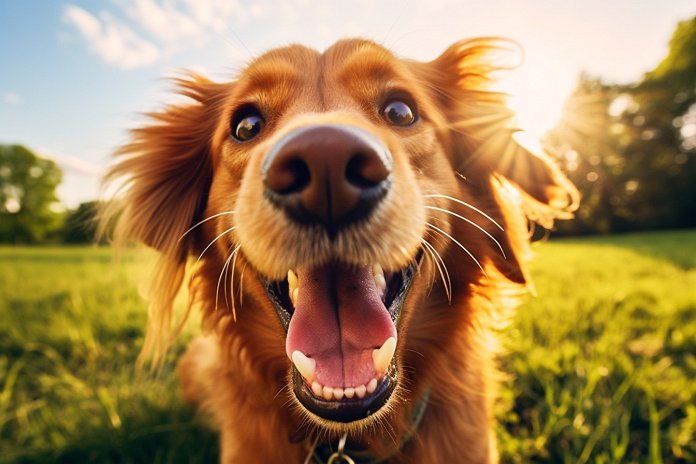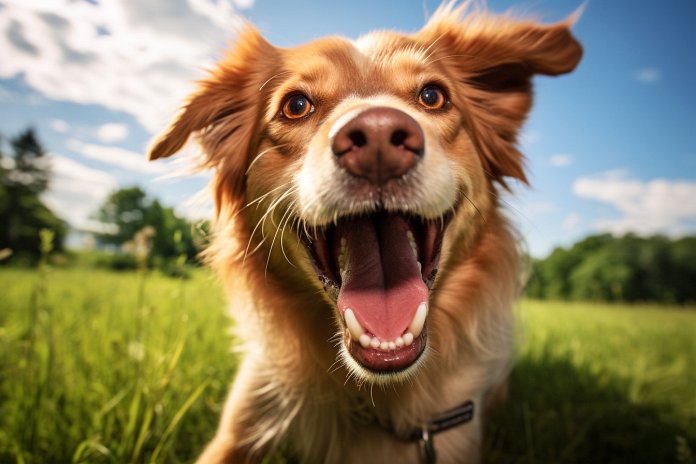
People can breathe through their mouths, and dogs can too. It is a common belief that dogs can only breathe through their noses and use their mouths only for panting. However, dogs can breathe through both their noses and mouths, and panting is a form of heavy breathing. In this article, we will explore how dogs breathe and what to do if your dog is experiencing breathing difficulties.
Signs of Abnormal Breathing
While it is normal for dogs to breathe through their mouths when panting, abnormal breathing can indicate a health problem. Signs of abnormal breathing in dogs include labored breathing (dyspnea), fast breathing (tachypnea), and excessive panting. If your dog is not breathing normally, it is important to take them to the vet for a thorough examination.
Body Language
Watch your dog’s body language for signs of breathing difficulties, such as weakness, raspy panting, head bobbing, and tongue hanging. Other signs to look for include flaring nostrils, noisy breathing, shallow breathing, and any other abnormal breathing habits.
The Science of Dogs Breathing Through Their Mouths
A dog’s respiratory system has two functions: to provide oxygen to the body and to help regulate body temperature. Dogs inhale air through their noses or mouths, which is then transported to the lungs. Oxygen is transferred to red blood cells, while carbon dioxide is exhaled. Dogs rely on panting to expel warm air from their bodies and replace it with cooler air from outside.
Treating Breathing Difficulties
It can be challenging to determine if your dog is breathing normally or not. It is important to understand what is normal for your dog in different situations. If you notice any signs of breathing difficulties, seek veterinary help immediately. Provide a full history of your dog’s health and any potential events that may have caused the problem. Your vet will observe your dog’s breathing and conduct a thorough examination to identify the source of the problem.
In conclusion
While mouth breathing can be normal for dogs, it can also indicate a medical emergency. Differentiating between regular mouth breathing and abnormal breathing is crucial. If you are unsure, it is always best to seek veterinary attention. Remember, being labeled a “mouth breather” is not an insult for your dog, but a fact of life.
“Mouth breathing in dogs: Understanding the difference between normal and abnormal breathing”

Tips & Things to Know
1️⃣ Dogs can breathe through both their nose and mouth, and mouth breathing is not necessarily a sign of distress. It is a normal behavior, especially during panting which is a way for dogs to cool down since they can’t sweat like humans.
2️⃣ There are several signs that your dog might be suffering from breathing difficulties, including labored breathing, fast breathing, and abnormal panting. If your dog exhibits any of these signs, it is important to take them to the vet as soon as possible as it could be a symptom of a deeper health problem.
3️⃣ Understanding what is normal for your dog’s breathing in different situations can help you identify when your dog is not breathing properly. If you notice any changes in your dog’s breathing, it is crucial to seek medical help immediately. It’s also important to provide a complete history of your dog’s health and any potential events that could have caused the breathing difficulties to your vet.
Frequently Asked Questions, Answered ✅
1. Can dogs breathe through their mouths?
– Yes, dogs can breathe through both their nose and mouth.
2. Why do dogs pant?
– Panting is a way for dogs to cool down their body since they cannot sweat like humans.
3. What are some signs of abnormal breathing in dogs?
– Signs of abnormal breathing in dogs include labored breathing, fast breathing, and excessive panting.
4. What could be the cause of heavy panting in dogs?
– Heavy panting in dogs could indicate heat stroke or a deeper health problem, such as infections or allergies.
5. When should I seek veterinary attention for my dog’s breathing difficulties?
– It is important to seek veterinary attention immediately if you notice any abnormal breathing in your dog, as it could potentially be a life-threatening emergency.